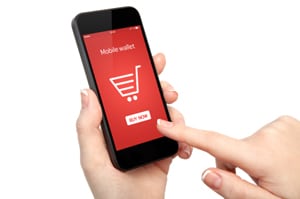 As we wrap up another year, looking back at the retail and technology trends that shaped 2013 can help us gauge what retailers can expect for 2014.
As we wrap up another year, looking back at the retail and technology trends that shaped 2013 can help us gauge what retailers can expect for 2014.
Heated competition from online retailers and the lack of traction for mobile wallets show we’re still in the early stages of digital and merchant convergence.
[CLICK HERE to view the entire 2014 Predictions archive]
The industry will continue to evolve in 2014 as mobile commerce continues to grow and retailers put more focus on creating targeted, personalized and seamless shopping experience for consumers.
What can we expect from commerce and mobile marketing in 2014?
Merchants will up the ante on delivering the best consumer experience.
In 2014, we will see consumers shifting loyalty to merchants that focus on delivering the most engaging, rich and useful customer experience. If retailers want to stay competitive, they will need to focus on making it as easy as possible for customers to find – and pay for – exactly what they want.
In an effort to provide a better experience, convert more sales and build loyalty, more and more merchants are releasing personalization apps that aren’t just focused on commerce, but make the entire shopping and purchase process more seamless for their customers.
This year, Domino’s released a new mobile app that allows customers to save favorite menu items and coupons and track pizza deliveries. Zappos launched a mobile service that enhanced filtering and personalization options. And Lyft car sharing gave customers the option to securely pay other drivers within the company’s mobile app. Those that win out will be both easy to use and also offer relevant content and value to the consumer.
This trend also hits close to home with established national merchants. Retail leaders like Best Buy and Walmart have entered a permanent price-matching war with Amazon, who is looking to offer on-demand grocery delivery as well as Sunday deliveries for Prime purchases in the near future. Traditional retailers are also playing catch up with their own efforts to rethink the customer experience, including Walmart’s new @WalmartLabs commerce think tank promising to up the ante for the best customer experience in-store, online and on-the-go.
 The mobile wallet won’t catch on…yet.
The mobile wallet won’t catch on…yet.
Smartphone adoption tipped the 50% mark for the first time in 2013, presenting a huge opportunity for retailers to capture consumers’ attentions – and dollars. But the number of players, lack of standardization across devices and platforms and rapidly evolving technology are stunting the industry from catching on. Apple Passbook and Google Wallet are failing to see momentum and more sophisticated, location-based payments systems like PayPal Beacon are knocking at the door. But things are moving so quickly, we’re sure to see a multitude of new technologies and offerings pop up next year.
In 2014 we’ll see more campaigns from mobile payments providers educating consumers about their offerings and convincing retailers why they are the best or most ubiquitous. But until some of the players shake out, we won’t see significant adoption from consumers. And for merchants, investing large amounts of money and time in a platform that could be outdated in a year poses a risky option.
Other hurdles include startups like Coin- which promises to aggregate all of your debit and credit cards into a single secure and connected smart-card, showing that digital wallets have a long way to come before customers think they’re quicker and more convenient than a simple card swipe.
 2014 will be the year of mobile commerce.
2014 will be the year of mobile commerce.
By 2017, it’s said that a quarter of all online sales will be made from a mobile device. Fifty-eight percent of adults have said they browse then buy online, and as little as a $5 price cut can influence them to choose a site like Amazon over buying direct from the retailer. And sometimes they don’t even wait to get home, making their mobile purchase right there in the store.
In 2014, we will likely see a tipping point where adapting to the competition from online retailers becomes mission-critical, as quick shipping and pricing pressure remove the barrier between in-store and online purchases. Retailers will need to invest more in their mobile apps, but also focus on creating a great in-store experience so customers won’t be tempted to buy elsewhere or online.
Data driven marketing will be a key strategy for local businesses.
A recent study by Street Fight indicated that the two most important factors for merchants when implementing a hyper-local marketing campaign are the ability to attract new customers and ensure the right people are being targeted. Promising at first, options like Daily Deals and mobile loyalty programs have lost their luster as consumers have lost interest in untargeted, hard-to-redeem offers, and merchants fail to see a measurable ROI.
In 2014, local businesses will cut through the clutter by getting more personal with their marketing messages and deals. New products and services are emerging to make it easier for even small businesses to access and track data like individual consumer spending and shopping habits.
These insights, previously only reserved for larger retailers, are now increasingly available to local merchants, helping them compete with the big box down the street. By using data wisely, local businesses can find new customers, convert new visitors into loyal customers, and track the marketing program for continued improvement and effectiveness.
Ed Braswell is the CEO and president of edo.